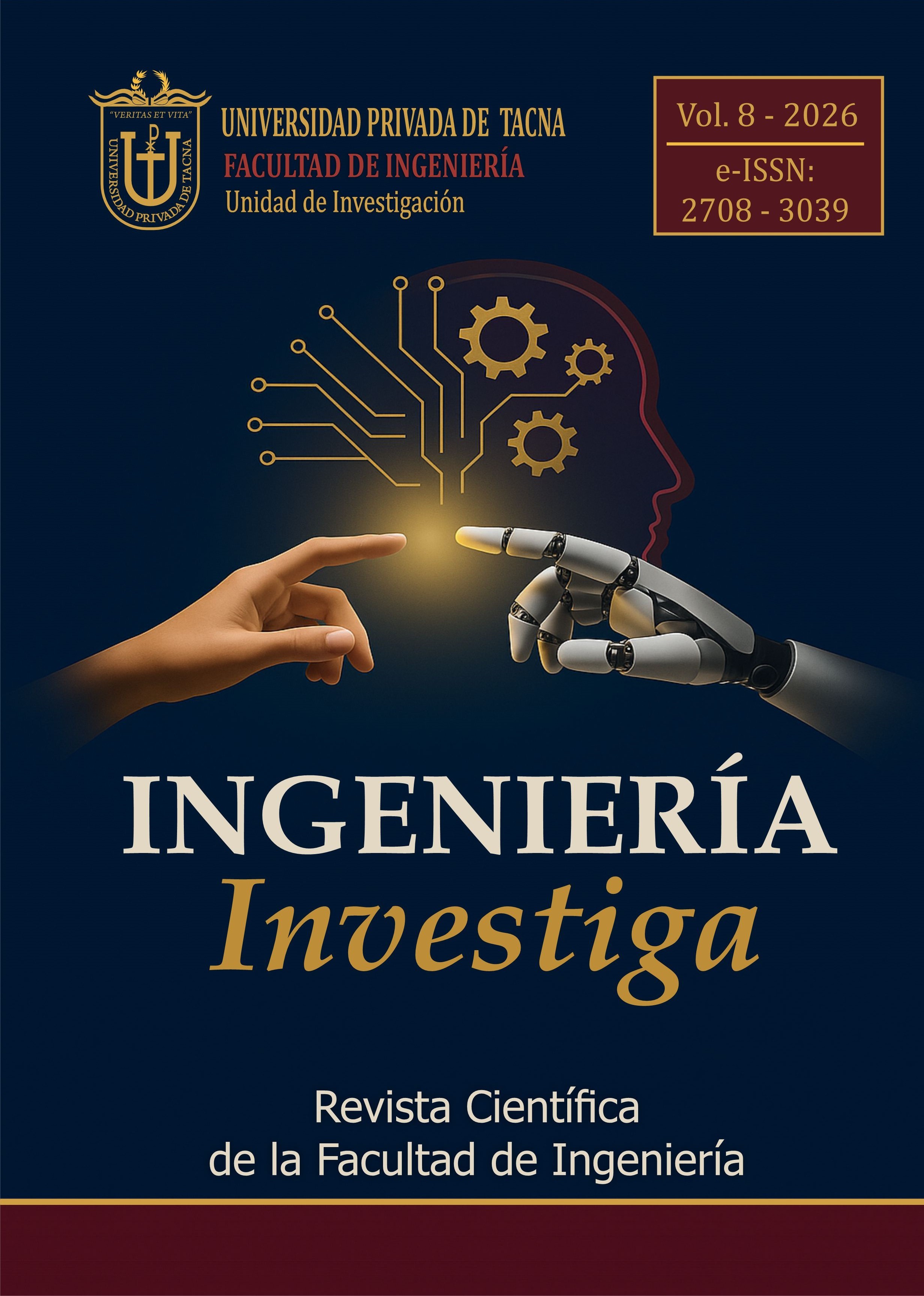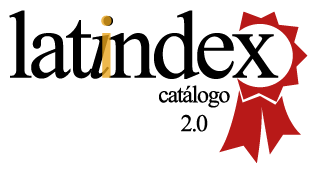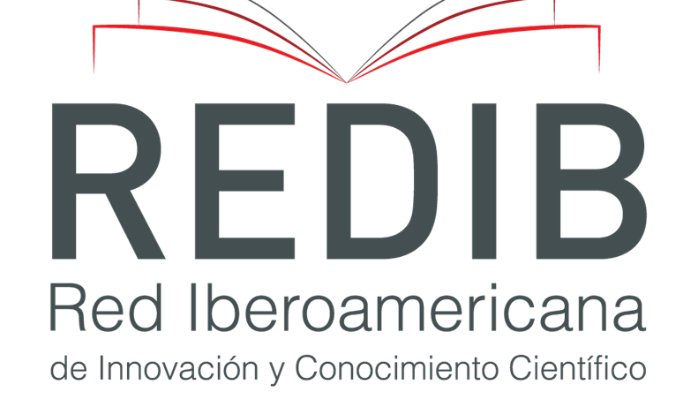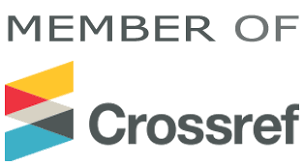IoT-Based Architecture Using Node-RED and MQTT for Environmental Monitoring in Agricultural Settings
DOI:
https://doi.org/10.47796/ing.v8i00.1332Keywords:
smart agriculture, ESP32, IoT, environmental monitoring, node-REDAbstract
The Internet of Things (IoT) enables the interconnection of sensors and actuators to provide scalable, effective, and low-cost solutions capable of collecting, transmitting, and processing real-time information. In the agricultural sector, the lack of integrated systems for environmental monitoring limits the efficient management of resources and timely responses to climatic variations. In this context, the objective of this work was to design and implement an IoT architecture for real-time monitoring of ambient temperature and humidity, using DigitalOcean as the cloud server, Node-RED as the integration environment, and the MQTT protocol for data transmission. An ESP32 microcontroller connected to a DHT11 sensor was employed, managed by the Mosquitto broker, with data storage in MySQL and visualization through a dashboard developed in Node-RED. The results demonstrated stable communication, with an average transmission time of two seconds and no data loss during testing. The proposed architecture proved to be an efficient, reproducible, and low-cost solution, suitable for academic and agricultural environments requiring continuous and reliable environmental supervision.
Downloads
References
Cano, A. M. C., Castillo, V. S., Gamboa, A. J. P., Castillo-Gonzalez, W., Vitón-Castillo, A. A., y Gonzalez-Argote, J. (2024). Internet of Things and Health: A literature review based on Mixed Method. EAI endorsed transactions on internet of things, 10. https://doi.org/10.4108/eetiot.4909
Chen, F., Huo, Y., Zhu, J., y Fan, D. (2020, 6 al 8 de noviembre). A review on the study on MQTT security challenge [conferencia]. 2020 IEEE International Conference on Smart Cloud (SmartCloud), Washington DC, Estados Unidos. https://doi.org/10.1109/SmartCloud49737.2020.00032
Comisión Económica para América Latina y el Caribe [CEPAL]. (2009). Guía metodológica para desarrollar indicadores ambientales y de desarrollo sostenible en países de América Latina y el Caribe. Naciones Unidas. https://repositorio.cepal.org/entities/publication/7eb7c401-8e8f-47a1-8efa-6464247dd2e5
Fuentes, N. A. (2023). Sistema IoT para el monitoreo de variables ambientales del cultivo de quinua, Puno 2023 [Tesis de pregrado, Universidad César Vallejo]. https://repositorio.ucv.edu.pe/handle/20.500.12692/118538
Garre, J. A. (2019). Sistema de control en tiempo real para sensores inteligentes usando microcontroladores PIC: Una aplicación para IoT [Trabajo de fin de grado, Universidad Politécnica de Cartagena]. https://repositorio.upct.es/entities/publication/d8a371a7-99cb-47b3-9a63-22ee15e3a906
Herrera-Rubio, J. E., y Ortiz E, V. J. (2022). Implementación de un sistema de monitoreo y control con tecnología IoT para determinar el comportamiento de las variables ambientales en la avicultura. Investigación e Innovación en Ingenierías, 10(1), 30–41. https://doi.org/10.17081/invinno.10.1.5016
Jongbo, A. O. (2023). Conejera alternativa a pequeña escala y su monitoreo ambiental utilizando sensores basados en Internet de las cosas (IoT). Revista Colombiana de Ciencia Animal - RECIA, 15(2), e971. https://doi.org/10.24188/recia.v15.n2.2023.971
Kairuz-Cabrera, D., Hernández-Rodríguez, V. M., Martínez-Laguardia, A., Hernández, L., Merino-Laso, P., y Schalm, O. (2024, 18 al 22 de marzo). Integración de Node-RED y Grafana en un sistema de monitoreo meteorológico [Conferencia]. En Proceedings of the XIX International Convention and Fair INFORMATICA 2024, La Habana, Cuba. https://goo.su/lEggnpw
Khalil, U., Malik, O. A., Uddin, M., y Chen, C.-L. (2022). A comparative analysis on blockchain versus centralized authentication architectures for IoT-enabled smart devices in smart cities: A comprehensive review, recent advances, and future research directions. Sensors (Basel, Switzerland), 22(14), 5168. https://doi.org/10.3390/s22145168
Ministerio de Ambiente y Desarrollo Sostenible. (2022). Banco de indicadores para el proceso de licenciamiento ambiental. https://goo.su/LqZtQ
Moreno-Arrieta, F. J., Vides-Herrera, C. A., Ropero-Castillo, C. C., Ramón-Valencia, J. D., y Ruiz-Ayala, D. C. (2025). Sistema para la eficiencia energética en edificaciones educativas utilizando tecnologías IoT. Prospectiva, 23(1), 1–17. http://ojs.uac.edu.co/index.php/prospectiva/article/view/3768
Orduz Pérez, A. F. (2025). Simulación de un sistema IoT para monitoreo ambiental en cultivos controlados usando Wokwi y Adafruit IO. Ingeniería Investiga, 7. https://doi.org/10.47796/ing.v7i00.1245
San Francisco UTN, F. R. (2022). Jornadas de Ciencia y Tecnología 2022. AJEA, 16. https://doi.org/10.33414/ajea.1145.2022
Sánchez-Castillo, V. (2024). Aplicaciones de la tecnología Internet of Things en las ciencias ambientales: un estudio mixto en la base de datos Scopus. Respuestas, 30(1). https://doi.org/10.22463/0122820x.4689
Sánchez-Cuevas, J. L., Guerrero Castillo, M. M., Mona Peña, L. J., Sánchez Jácome, O., y Velasco Pacheco, A. E. (2023). Monitoreo de temperatura y humedad ambiental con lorawan: IoT en el desafío energético y el cambio climático. REVISTA IPSUMTEC, 6(5), 60–67. https://doi.org/10.61117/ipsumtec.v6i5.215
Trendov, N. M., Varas, S., y Zeng, M. (2019). Tecnologías digitales en la agricultura y las zonas rurales: Documento de orientación. Repositorio del Conocimiento. Organización de las Naciones Unidas para la Alimentación y la Agricultura. https://openknowledge.fao.org/items/9c9d72f6-9438-4f51-ac9c-a792972cb80f
Downloads
Published
How to Cite
Issue
Section
License
Copyright (c) 2025 Cesar Augusto Romero Molano, Andrés Felipe Orduz Pérez

This work is licensed under a Creative Commons Attribution 4.0 International License.








